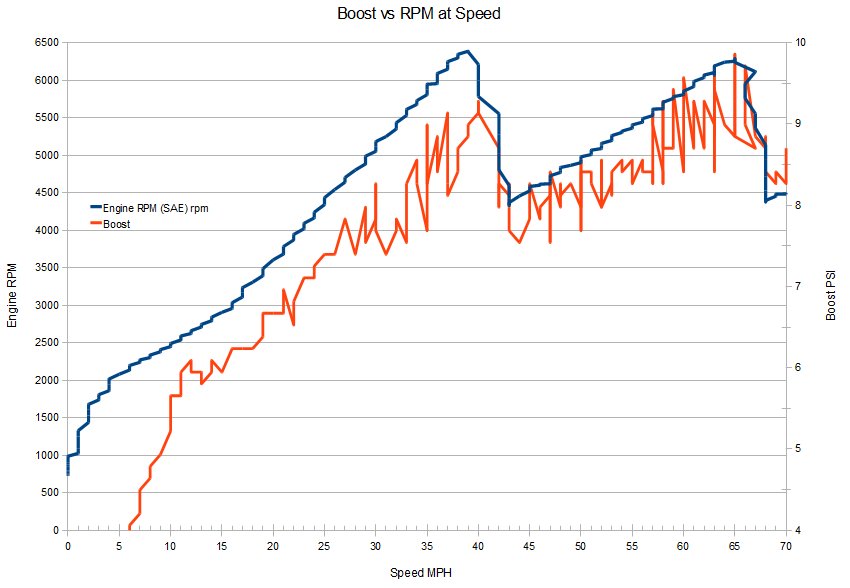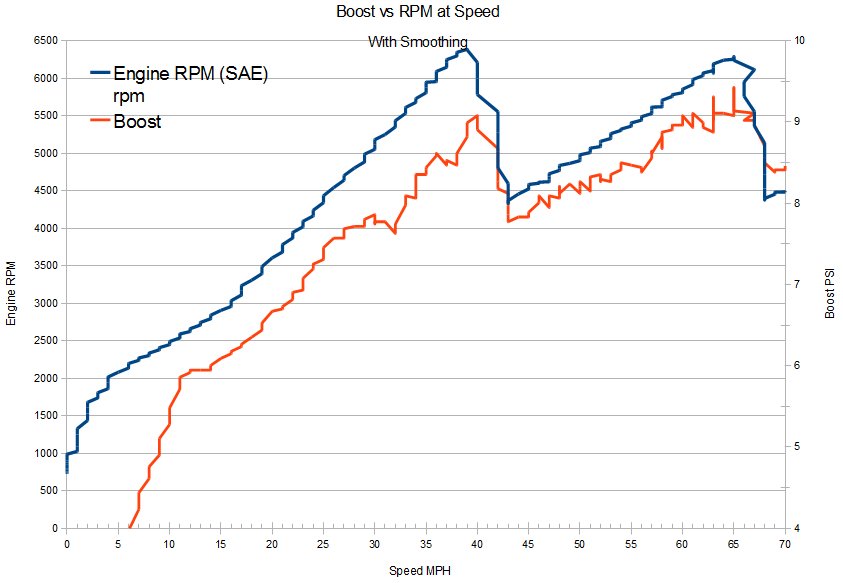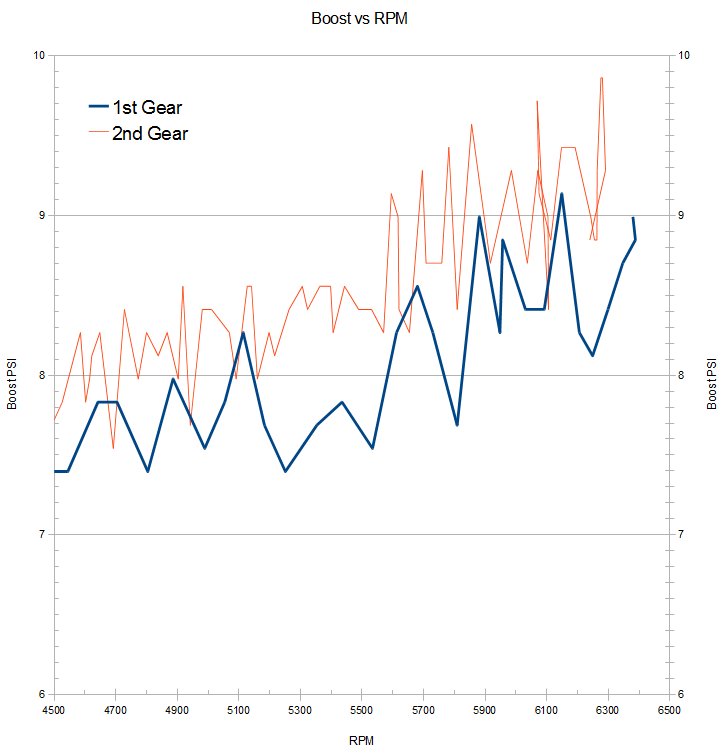I have been thinking about boost and barometric pressure, as what I see in the scans confuses me. Complicating the issue is source of the signal, meaning there are multiple sources of related information, and the poll rate or how often that source updates.
Basic Issue snapshot:
At a specific scan snapshot I see this:
Boost Math 17.7 — this is a parameter in hptuners math that takes MAP minus Baro
Boost / Vacuum 18.7 psi — this is a sensor that compares total boost to vacuum (baro)
Absolute boost (not referenced to baro) 32.7 psi
MAP 31.6 psi
Baro (SAE) 13.49 psi
Baro (mfr) 14.43 psi
Baro (SAE) chart update 13.69 psi
First, let me say I love the detail that we can see in the scanner.
I do get how each of these numbers should relate — for example, absolute boost minus barometer should be what Boost/Vacuum is; that’s the definition. But the math does not quite work. There are 3 baro readings, and they differ slightly, so there’s that. But none of them fit perfectly. There are 2 total boost readings, MAP and Boost Total, so there’s that, but neither of them fit perfectly with any of the 3 baro readings to result in the parameters shown.
Example: Abs Boost – Baro (sae) = 32.7 – 13.49 = 19.21 psi
2348 Boost Math says it uses 50032, the Generic Sensor for Baro, and 50030 the MAP.
Boost Math scans at 17.84 psi. 50032 Baro reads 14.06 psi in that instant. The MAP reads 31.90 in that instant. 31.90 – 14.06 = 17.84, so that works but depends on recognizing the EXACT baro and MAP used in the instant. So Boost Math is Manifold Absolute pressure minus the current (instant) baro reading.
The “Baro SAE” on the hptuners chart at that instant reads 13.49. But when I ‘chart’ baro sae it shows the 14.06 psi at that instant. I suspect the difference is the refresh rate for each.
Boost/vacuum in the chart at that instant reads 18.75 psi, which is almost 1 psi higher. In the channel list it shows at 18.34 psi, which again I suspect is refresh rate. Notionally it is reading a similar thing — total MAP boost minus baro. MAP at that instant (chart) is 31.9 psi versus the channel shows MAP 31.6 psi. We know the source is not the same as boost math, since they differ. So what are boost vacuum’s source values? I observe that Boost Pressure sensor at that instant is 32.84 psi; if we subtract the chart instant baro of 14.06 we get 18.78, which gets us close to 18.75 psi, although not exact. So Boost/Vacuum appears to be the Absolute Boost sensor minus the current (instant) baro reading.
SO which is more accurate, Boost PSI (boost math) or Boost/Vaccum? The difference appears to be the difference between the 32.84 psi Boost Sensor and the 31.9 psi Manifold Absolute pressure. Why do these two sensors for notionally the same thing vary, and which is ‘more accurate’? My intuition is since there IS a Boost sensor, to use it for boost. That makes the Boost/Vacuum the “correct” boost versus the Boost Math.






